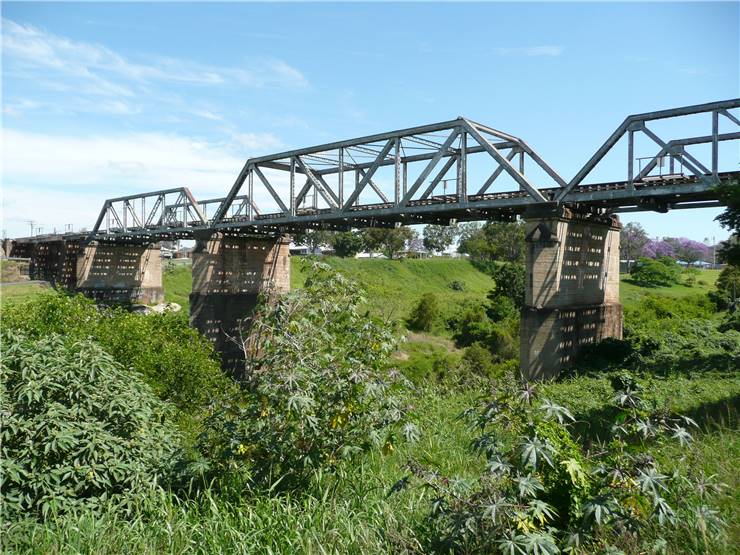Pratt Truss Bridge
Since its introduction in 1844, this bridge design became part of hundreds of bridges created up to Second World War. It was designed by the Thomas Willis Pratt (1812 – 1875) and his father Caleb Pratt, a pair of American engineers, just several years after William Howe patented his famous Howe truss design. This bridge design immediately became widely used during the period when many bridges moved from wood components toward all-steel construction designs. Its most compelling feature was the ability was to span great distances using simple construction methods. It was regularly used to span anchor points that are up to 250 feet (76 meters) apart. It was most commonly used in railroad bridge construction, although it was also a preferred choice for creating other types of bridges all around the world until early 20th century.
Thomas Willis Pratt was born in 1812 in from Boston, Massachusetts. He was schooled at college in Troy, NY at the Rensselaer Institute and Rensselaer Polytechnic Institute, but he never graduated. He instead returned home and worked at Boston and Worcester RR and the Providence & Worcester RR engineering companies when the majority of bridges were built using wood and with truss designs made by S. H. Long, Elias Towne, and William Howe.
Seeing how Howe’s designs that were enhanced with vertical metal members started replacing long-used Long and Towne Trusses, Pratt decided to enhance 1840 Howe truss and Long Truss design by making diagonal structures made from steel, verticals from wood switching diagonals to flow into other direction than Howe’s. With proper camber and pre-stress, newly created Pratt Truss became structurally stable, enabling it being used over long spans and fixing several disadvantages present in all then commonly used truss designs. Pratt truss patent was accepted on April 4, 1844, under a category of “TRUSS FRAME OF BRIDGES (Truss Bridge)”. Although his name was listed first, many speculate that Thomas’s father Caleb was listed on the patent application as a form of a tribute to his long career in engineering.
The basic form of Pratt truss includes triangular truss design whose diagonal members slope toward the center of the bridge. When under load, this design makes diagonal members feel tension (the force that expands the object apart), while vertical members feel suspension (the force that pushes objects into one self). If the diagonal members are made from the solid material (such as metal bars), the heavy load of the bridge may cause the need for implementing reinforcements to the center area of the Pratt truss bridge, since that part of the bridge will experience the strongest force loads. Those center areas can be reinforced with stronger materials, or be subdivided into K or Y-shaped patterns. Pratt truss bridges are statically determinate (all of its support reactions and member forces can be calculated using only the equations of static equilibrium), which made them capable for use in scenarios where bridge designers needed to span great distances.
Some of the most famous bridges that feature Pratt Truss design are:
- Governor's Bridge in Maryland (span of 105 feet)
- Dearborn River High Bridge near Augusta, Montana (total length of 251 feet)
- Fair Oaks Bridge in Fair Oaks, California
- Bollman Truss Railroad Bridge
- Dearborn River High Bridge
- Tharwa Bridge
- Healdsburg Memorial Bridge
- Heart Bridge
- Schell Bridge
- Royal Albert Bridge

